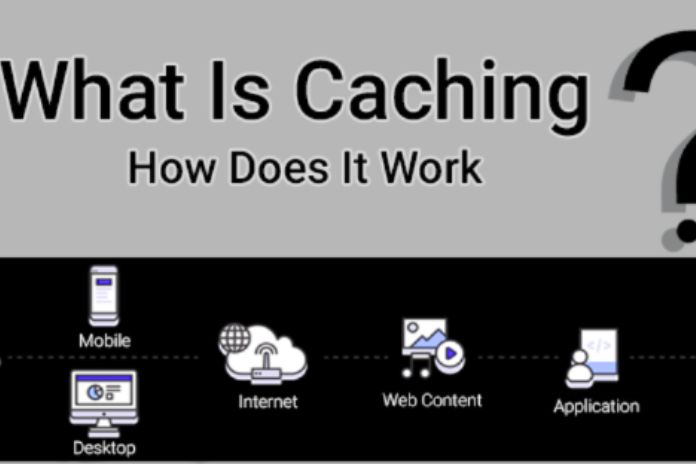With caching, copies of files are created and temporarily stored. This enables faster access, which is particularly beneficial for web applications.
What Is Caching?
Websites are becoming increasingly sophisticated, and even as devices continue to improve, methods that make surfing faster are urgently needed. One of these methods is caching. With caching, the content of a web application is stored temporarily during the visit.
If a user returns and calls the corresponding application again, the data can be made available more quickly. The loading times are significantly reduced, the data is made available much faster, and the technology is also very advantageous in search engine optimization (SEO).
The elements, e.g., B. HTML files, JavaScript, CSS, or images, are usually temporarily stored on a server during caching and then called up when you visit again. In principle, however, the storage can take place on the hardware or with the help of software. If the caching is configured correctly, visitors will have much faster access to all the information they want. Caching has enormous advantages, especially for websites that are visited regularly.
How Does Caching Work?
With caching, certain data is copied from a website to an intermediate memory ( cache ). When you access an online presence, your browser stores various web content on your device or a server. This happens in the background, and you do not know what content is stored unless you actively do so. If you now close the tab or your window, the data will initially remain untouched. However, if you call the website again later, the browser loads the stored data from the cache, leading to significantly shorter waiting times.
However, not only websites use caching for a long time. Local applications and search engines also use the method to offer users a better user experience. In most cases, however, the stored data can only be stored temporarily since the caches are comparatively small. For this reason, the files are provided with a time limit. When this expires, the file is automatically deleted from the cache to make room for new files. If the cache is too full, it can also be emptied manually to prevent hindrances and restrictions.
Where Is Caching Needed?
Caching is a significant factor, especially on the Internet, which leads to significantly faster loading times and, thus, happier users. It is worthwhile for most providers to do their own thing in this way to optimize the site. If you operate an online offer, you can analyze the loading times, the ranking in the search engines, and other parameters and then conclude the appropriate caching strategy.
The feature is also an easy and quick way to make WordPress faster. The CMS offers numerous WordPress caching plugins for this purpose.
ALSO READ: Deployment Automation: Fast And Reliable Updates
What Types Of Caching Are There?
The three most common options for using caching for a website are as follows:
Browser Caching
With this method, specific data from a website is stored on the visitor’s end device and can be retrieved from there when you visit again. As the operator, you can choose which information should be saved via caching. Users can manage the data on their storage and delete it if necessary. The server load is thus minimized. Large and frequently frequented websites in particular benefit from this method.
CDN Caching
With this caching, data is temporarily stored on different servers . A Content Delivery Network (CDN) then assists in querying and delivering the stored information. The CDNs distribute the data to a server structure to deliver it even faster if necessary. This division is beneficial when numerous users want to access an offer simultaneously. It also has a positive effect on a website’s search engine ranking.
Site Caching
For websites struggling with their infrastructure, site caching can provide some relief. In principle, this method saves a backup of an online presence. Also, it makes it available via the Google cache if the website itself has problems and specific content is incorrect or no longer accessible. Which elements are to be stored for how long can be specified by the operator in the backend? However, this method is not optimal for websites with up-to-date content.
What Are The Advantages Of Caching?
Caching offers numerous benefits, which is why the feature is so widespread. Done correctly, the pluses far outweigh any potential disadvantages. Benefits include the following:
Better User Experience
The goal of caching is significantly easier and faster access to websites and applications. This has advantages for both parties involved. For users, this means that all the information they want is available much more quickly, making access more convenient.
Providers benefit from the satisfaction of their visitors and can thus record higher usage figures in many cases. Some content is available even when a website struggles with problems or downtime.
Performance
For providers, caching also increases the performance of their applications enormously. The faster data access leads to a lower server load and, thus, a reduction in overall costs. In addition, the backend is relieved, reducing loading times and minimizing the risk of crashes.
Discharge
Thus, caching for websites and applications brings fundamental relief. This is particularly important when many users are accessing an offer at the same time. The use of caching helps to better process visitor volumes. Sections of a particularly heavily frequented website can also be operated more effectively in this way.
